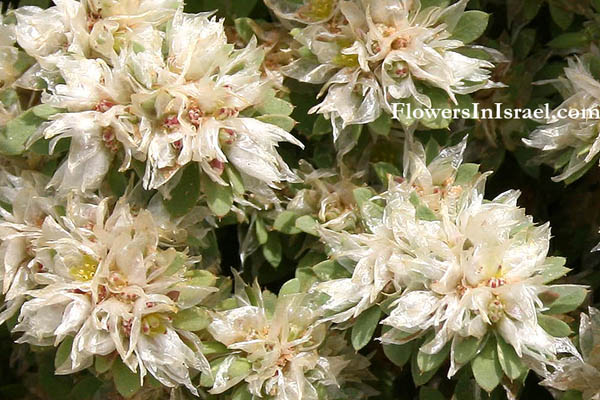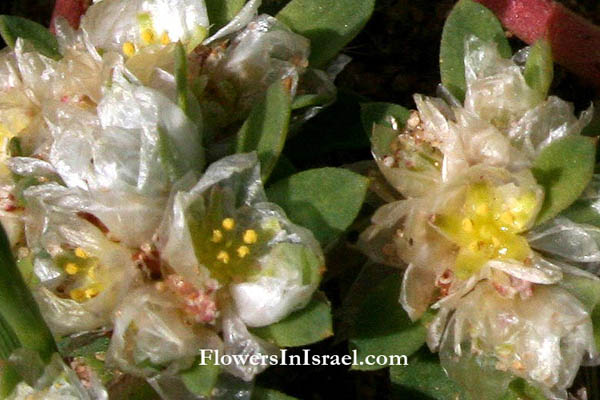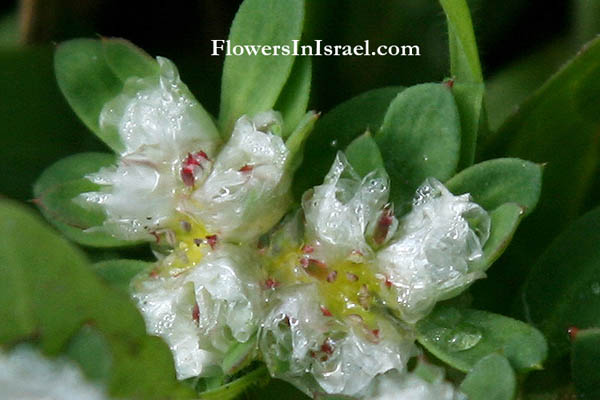Hebrew: אלמוות הכסף, Arabic: رجل الحمامة
| Scientific name: | Paronychia argentea Lam. | |
| Common name: | Silver nailroot, Silvery Whitlow Wort | |
| Hebrew name: | אלמוות הכסף | |
| Arabic name: | رجل الحمامة | |
| Family: | Caryophyllaceae, ציפורניים |

|
| Life form: | Hemicryptophyte | |
| Stems: | stems 15-30cm, usually creeping, much branched, mat forming | |
| Leaves: | Opposite, ovate-lanceolate; entire margins | |
| Flowers: | Inflorescence, cyme; 5 White, yellow petals | |
| Fruits / pods: | Achenes | |
| Flowering Period: | January, February, March, April | |
| Habitat: | Batha, Phrygana | |
| Distribution: | Mediterranean Woodlands and Shrublands, Semi-steppe shrublands, Shrub-steppes, Deserts and extreme deserts, Montane vegetation of Mt. Hermon | |
| Chorotype: | Mediterranean | |
| Summer shedding: | Perennating |

Derivation of the botanical name: Paronychia, Greek, para, by the side of, near; onyx, nail; "a whitlow," a painful abscess on the side of the nail at the end of a finger or toe. One of the common names for Paronychia is whitlow-wort, an herb thought to be a cure for whitlow. argentea, silvery. The Hebrew name:אלמות,אלמוות, almavet, in the Bible, Proverbs 12:28 "In the way of righteousness there is life; along that path is immortality". What makes the plant unique is not its white flowers, but the bracts that remain even after the flower's emergence - so it is called "immortal."

|